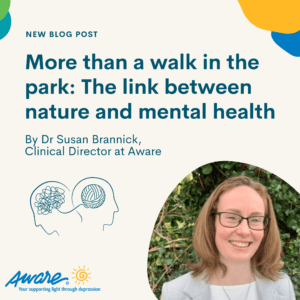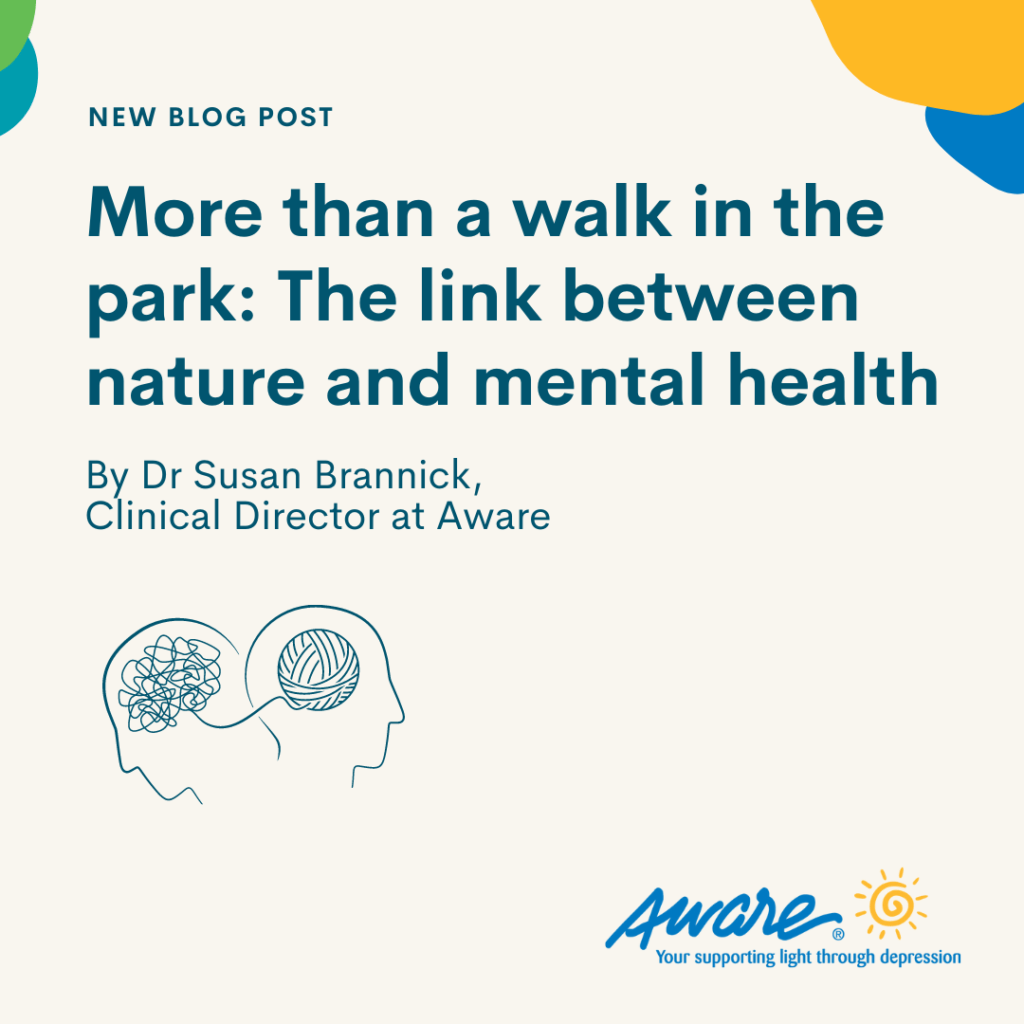
A recent study on the connection between green spaces and postpartum depression caught my eye this month. Researchers found that lower rates of postnatal depression were linked with green spaces in urban areas. They thought that physical activity might influence the relationship between mood and these spaces. Interestingly, tree coverage showed a greater effect than green spaces like parks for instance. Of course, living in leafy suburbs probably brings more benefits than just trees (like higher socio economic status which is linked to better health outcomes), but it is an interesting finding nonetheless.
When moving to the wood from the trees, the link between nature more generally and mental health is not new, and several studies have shown that being in nature can decrease stress and anxiety and improve psychological wellbeing. Some research suggests that amount of time spent in nature at weekends, can help protect against mild depression.
So If being in nature is helpful, how might that work? One idea is that the way our attention works in nature, can recharge or restore our overall attention and focus levels. So essentially, nature can help us recharge our attention battery. Kaplan and Kaplan call this Attention Restoration Theory (ART).
Another theory is that of stress reduction which says that the experience of being in nature may be enough to activate the parasympathetic nervous system, which allows us to feel calm and relaxed. Some studies found that feeling calmer leads to less rumination. Rumination means getting stuck on a loop of negative repeating thoughts and is a central part of depression. Rumination also acts as a barrier to experiencing pleasure, or what is called anhedonia. So if we consider this in our nature example, if you are in an awe inspiring place of natural beauty but your mind is lost in negative thoughts and memories about the past, you probably wouldn’t get as much pleasure or joy from the environment.
However, nature comes into its own here again as there is some evidence that says using mindfulness skills in nature can help people recognise they are ruminating. We can understand mindfulness here as that simple but also complex task of how to be here now. That is, being present, taking in what is here without fixation on what was or will be. To me this suggests that intention is particularly important for being in nature if traveling with one’s black dog. To be more specific, actively making the intention to be present in the natural environment as a way of getting distance from the thinking brain. Using the five senses to support that presence could be one way of doing this. As well as keeping a compassionate eye out to notice when the mind wanders to well worn negative stories about the self or the past and bringing attention back to the here and now.
There is also some research to show that mindfulness can increase positive feeling in the moment of observation. So using mindfulness in nature may not only interrupt rumination itself but also opens the door to enjoying being in nature. Going back to the Kaplans and ART, they suggest three other factors are important when being in nature. These include being away – so getting out of your every day routine places to go. Extent – the scope to feel immersed in the environment and compatibility –that the space or the activity in line with you are interested in and also feels safe. So potentially things to consider before heading off into the great outdoors.
So in summary being in nature could help restore ability to pay attention and lessen fatigue, help to feel calmer and less prone to negative thinking and overall improve mood. If you are interested in this area, but not sure where to start, here are some starting ideas on how to enjoy nature.
This blog is by Dr Susan Brannick, Clinical Director at Aware as part of a monthly blog series.


